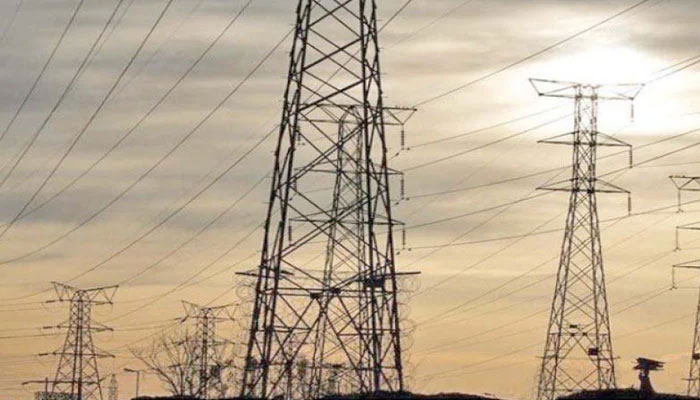A plan for electricity prices
The government is yet to present any plan that breaks the cycle
There is a new government in place. Similar to previous governments, this one also does not have any plan in place to arrest economic stagnation, and move towards any modicum of sustainable growth. The faces at the helm have been around for three decades, and their plans remain grounded in the last century. The world has moved on, and so has the region, but Pakistan continues to be stuck in a low-growth trap.
In order to unlock economic growth, we need to unlock export-oriented industrial growth. This needs to be broad-based export-oriented growth, rather than serving a specific sector only. The core tenet of any industrial policy is availability of affordable energy. The government, since it doesn’t have any plan, continues to pass on the increase in electricity prices (largely a function of inefficiency) to consumers. More importantly, as prices are increased, demand for electricity goes down, resulting in lower off-take of electricity from the grid, which inadvertently results in another round of increase in prices to cover for capacity costs, and other inefficiencies.
The government is yet to present any plan that breaks the cycle. It continues to increase the price of electricity, further burdening the consumer, and inadvertently industrial growth, without undertaking or even planning for any serious reforms. A complex circular debt resolution plan, which has failed multiple times over the last few years continues to see the light of the day, only to fail again. The lack of imagination is appalling, and such lack of imagination is holding back the potential of almost a quarter of a billion people, just because the usual suspects do not have a plan.
As electricity prices continue to increase, and as demand remains flat or goes down, there will be a mass exodus of industrial units from the grid, making electricity more expensive for the remaining consumers on the grid – mostly households and commercial entities. Even though high electricity prices may not work for the consumer, the government likes high electricity prices – because that leads to higher tax collection. In some sadistic way, higher electricity prices result in higher taxes, which allows tax authorities to boast about how they have increased tax collection, even though it wrecked the economy at large.
There can be a plan. The plan is to consider policy framework at a molecule or electron level, and to direct energy to its most efficient, and value-added use. The current gas allocation policy effectively supplies energy at ridiculous subsidies, creating an arbitrage for industries to get off the electricity grid, and use gas.
This is what the government needs to do. Almost one-fifth of an electricity bill is just various taxes and government charges – cut those in half. This can potentially unlock demand for electricity, and drive industrial growth. Rreduction in taxes would mean that the tax authorities may have to actually do work on expanding the tax net, and increase taxes through more direct means, rather than extracting the same through consumption. If we want the economy to have even an iota of hope to get on a sustainable growth trajectory, this will have to be done.
As taxes on electricity consumption are reduced, and consumption increases, overall capacity charges will also reduce, triggering positive cyclicality. Similarly, gas prices across the board also need to be rationalized, such that domestic consumers pay a fair price for the gas they are consuming. Currently, gas companies have protected consumers, based on the level of consumption of gas. As gas is barely supplied to households, even the richest consumers become protected consumers. The concept of protected consumers should strictly be linked to household income, and not consumption of gas. If any subsidies do need to be provided to the most vulnerable economic segments, the same can be reallocated through direct cash transfers via BISP, rather than through distortion of energy pricing.
Available gas should then be reallocated to the highly efficient natural gas fired power plants, rather than inefficient captive power. This will automatically reduce the price of electricity through more efficient usage. Since electricity prices are reduced through the above measures, industries will have an incentive to remain on the grid and move towards more efficient utilization of machinery, and processes. As industries and commercial entities alike start using the grid again, the positive cyclicality associated with lower capacity charges will kick in again.
There’s more that can be done here. There is almost $4 billion of debt that various CPEC power projects have on their balance sheet. Even though it is debt of private entities, it is covered by sovereign guarantee, and the responsibility of arranging foreign currency for repayment of this also for the government. Effectively, this becomes a sovereign risk, whether anyone accepts it or not. Since such debt is denominated in US dollars, any depreciation of the rupee effectively results in escalation in tariff, since it is passed onto the consumer. In order to hedge the consumer from further increase in prices due to a depreciation of the rupee, there exists a case for the sovereign to swap out the US dollar debt of power plants, and replace it with rupee-denominated debt. Through this, it would be possible to hedge the consumer against the rupee depreciation, while also improving the risk profile of the debt, much to the satisfaction of lenders.
These are policy decisions that can be executed within a few weeks, and the impact can be seen almost instantaneously. Detractors may say that these are all difficult decisions, and even theoretical at best. Such detractors must acknowledge that through lazy policy we have succumbed almost quarter of a billion people to a life of misery. Maybe it is time to be more ambitious, and actually do something to pull people out of their misery and put them on a path of sustainable growth.
The writer is an independent macroeconomist.
-
 Why Ashton Kutcher Is Still Talking About Whether He Showers
Why Ashton Kutcher Is Still Talking About Whether He Showers -
 IMF’s World Economic Outlook: ‘Resilient’ 2026 Growth Expected Amid Tariffs & AI Boom
IMF’s World Economic Outlook: ‘Resilient’ 2026 Growth Expected Amid Tariffs & AI Boom -
 Find Out Early Subtle Signs That You Might Have Parkinson's Disease
Find Out Early Subtle Signs That You Might Have Parkinson's Disease -
 Prince Harry Appears In High Spirit, Greets Supporters At London High Court
Prince Harry Appears In High Spirit, Greets Supporters At London High Court -
 Kate Middleton, Prince William Left 'frustrated' For THIS Major Reason
Kate Middleton, Prince William Left 'frustrated' For THIS Major Reason -
 Robert Irwin Reveals Relationship Status After 'DWTS' Romance Rumors
Robert Irwin Reveals Relationship Status After 'DWTS' Romance Rumors -
 Relieve Eczema Symptoms This Winter With Simple Steps
Relieve Eczema Symptoms This Winter With Simple Steps -
 Prince Harry Faces Marital Tensions As King Charles Offers Olive Branch
Prince Harry Faces Marital Tensions As King Charles Offers Olive Branch -
 South Korea, Italy Strengthen Ties To Bolster AI Technology, Business, Defence Cooperation
South Korea, Italy Strengthen Ties To Bolster AI Technology, Business, Defence Cooperation -
 Elon Musk Shares Crucial Advice As China’s Birth Rate Hits Record Low Since 1949
Elon Musk Shares Crucial Advice As China’s Birth Rate Hits Record Low Since 1949 -
 Kelly Clarkson Finally Quitting Morning Show?
Kelly Clarkson Finally Quitting Morning Show? -
 'Confident' Prince Harry Breaks Silence After Returning To Britain
'Confident' Prince Harry Breaks Silence After Returning To Britain -
 James Gunn Reveals What Caused Wonder Woman Casting Rumors
James Gunn Reveals What Caused Wonder Woman Casting Rumors -
 Tesla Emerges Early Winner As Canada Welcomes Chinese EVs: Here’s Why
Tesla Emerges Early Winner As Canada Welcomes Chinese EVs: Here’s Why -
 New Hope For People With Obesity As Failed Drug Offers Cure
New Hope For People With Obesity As Failed Drug Offers Cure -
 Prince Harry Considering ‘half-in, Half-out’ Royal Role Amid UK Trip?
Prince Harry Considering ‘half-in, Half-out’ Royal Role Amid UK Trip?




